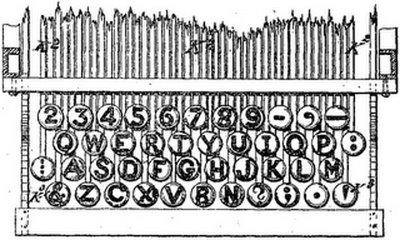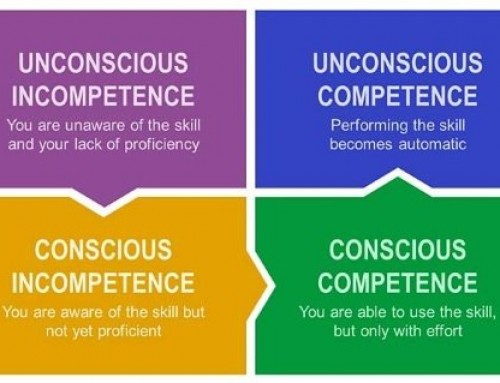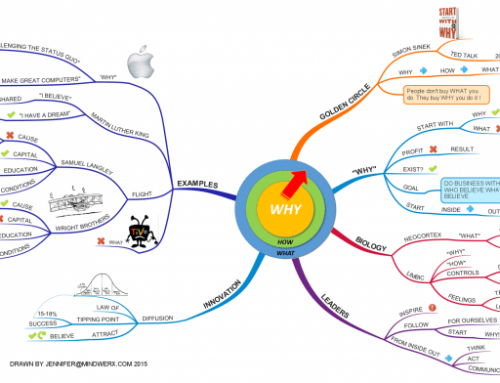 Have you ever wondered why people you work with resist change, particularly any sort of unique or innovative change? Well it may come down to what we call the QWERTY Mentality.
Have you ever wondered why people you work with resist change, particularly any sort of unique or innovative change? Well it may come down to what we call the QWERTY Mentality.
This comparison of how many people think, to the common QWERTY Keyboard used on most computers today, helps explain why people so often resist creativity and innovation. The QWERTY keyboard got its name from the alignment of the letters Q W E R T Y near the top left of almost every typewriter or computer keyboard in use today, and is even on many mobile devices – chances are high the keyboard on your computer is one, have a look.
The QWERTY Keyboard
The QWERTY keyboard layout was devised and created in the early 1870s by Christopher Latham Sholes, a newspaper editor and printer who lived in Milwaukee. The construction of the first “Type Writers” had two flaws that made the product susceptible to jams. One of these was that the characters were mounted on metal arms or type-bars, which would clash and jam if neighbouring arms were pressed at the same time or in rapid succession.
Experts in the area tell us that contrary to popular belief, the QWERTY layout was not designed to slow the typist down, but rather to speed up typing by preventing jams. However in a sense it actually did this by slowing down operators who were typing too fast for the typewriter design at that time.
So in the 1870s the QWERTY Keyboard was designed to suit a particular situation and for nearly a century this ‘standard’ layout served its purpose. Then with the rise of the Electric Typewriter the issue of jamming was almost eliminated, and yet the QWERTY standard remained. Then even later with the creation on the computer QWERTY stayed on, and now we even see this layout on many mobile devices.


QWERTY is a fabulous example of a standard that has remained unchanged for almost 150 years, despite the fact that the reason for the design has not been relevant for almost 50 years. In the last decades there have been attempts to redesign computer keyboards, but none has caught on, even though many alternative designs clearly demonstrated they would allow significantly faster typing speed. Why is this?
Reasons being offered are the difficulty in redesigning so many existing pieces of equipment, and the massively high acceptance of the QWERTY standard. It is argued that a departure from QWERTY would create a situation where many different standards would start to compete and compatibility between systems would break down. And that is a sound argument.
However, the real result is we are using an arguably inferior design in order to have everyone using the same system. It is how we’ve always done it. Sound familiar?
Change is Hard
In much of the work we do with clients, we are attempting to facilitate change, promote creativity, drive innovation and help people learn better. And it is amazing how much resistance we get, and we even hear people tell us some of what we’re proposing is impossible. But as futurist Joel Barker once said “Those who say it cannot be done, should get out of the way of those who are doing it.”
And there are lots of examples of this resistance. Our friend Rick Otton, author of ‘How to Buy a House for a Dollar’has a unique and innovative approach to property investment, that many so-called experts in the property game say is impossible. I’ve known Rick for about five years and had the pleasure of speaking on creative thinking to his Platinum Group a few times. Each time I do I’m encouraged to hear great stories of how creative people like Rick are helping others achieve their property dreams by doing what ‘simply cannot be done’ according to the standard system.
Rick is definitely not stuck with old mindsets about what can be done and he doesn’t let traditional standards get in his way. So every day for many years now, in a variety of countries, he has done the impossible and helped thousands of people. His mission is to help a million people buy a house for a dollar. He certainly doesn’t have a QWERTY Mentality.
Every Word is Important
Another examples of QWERTY in action is when my partner in Mindwerx (and my wife) Jennifer Goddard was coaching a very successful lawyer. She was taking him through our Range and Rapid (Speed) Reading and Mind Mapping techniques, and there was some definite resistance. This lawyer had asked Jennifer to coach him, but when it came to speed reading, he had a fixed mindset that ‘in law every word is important’ so he had to read things slowly and carefully.
And while he is probably right about every word being important, he is mistaken about his reading technique. What Jen showed him is that every piece of reading requires a strategy for success. She emphasised that reading a contract is much different to reading a new law article or book. Reading a solicitor’s brief is different from reading to relax, etc. She explained that reading starts with a clear purpose and that any number of reading methods might then be used to achieve his goals.
For example, any large document or book would first be power browsed to get an overall ‘feel’ for the content. Then key sections might be read more thoroughly, but at speed, not slowly as most believe. Many people think concentration is better if you read slowly, and that comprehension will therefore be higher. But in reality reading too slowly, as almost all adults do, actually causes the mind to be easily diverted. Have you ever been reading a book or article and got to the bottom of the page and realised you had no idea what was at the top of the page? Most of us have, and that is due to poor concentration from reading too slowly.
And as far as contracts go, Jen has a perfect example of how using a lawyer’s approach can have serious financial consequences. A few years ago she was in the UK helping consolidate a company with legal entities in 18 different countries, into a single UK headquartered organisation. The lawyers from these 18 countries had agreed a 120 page contract, and Jen wanted to get a good idea of what was in it so she could work with the lawyers as needed.
One weekend she took the contract home and power browsed it, then sped read it before starting to Mind Map the key points. In doing so she felt something wasn’t quite right, and her Mind Map pointed her to a couple of key clauses, which she then read in detail. What she found was two discrepancies that could have cost the new organisation as much as £20M. When she pointed these out to the lawyers, they were staggered they had all missed them.
When Jen told me the story, I commented that it was a case of ‘not seeing the forest for the trees’. These experts, with their traditional ‘every word is important’ reading and note-taking approaches had missed the big picture, which showed where the holes were. So after that Jen and her Mind Map became the ‘go to’ place for contract issues.

Be Willing to Challenge
As I said before there are lots of examples where sticking to traditional beliefs, methods, and standards have prevented people from moving forward, from finding new more innovative ways of doing things. Yes standards have a place and often produce very good results across a wide area, so they shouldn’t be discarded hastily. But if we aren’t willing to challenge traditional methods at least some of the time, we’re leaving opportunities and profit on the table, and perhaps denying ourselves and others the chance to achieve the impossible.
So ask yourself if there are any long-held views you have that might be stifling your creativity, your capacity to excel. I encourage you to resist the QWERTY Mentality and to take time to challenge long held traditions, standards, assumptions and beliefs.
Don’t let the easy path of standardisation block your thinking, take some time to at least consider if there are other paths you might take. Resist the QWERTY Mentality, and you might just achieve the impossible as well.
Let the Cre8ivity Begin!
Bill Jarrard
Mindwerx International
Bill Jarrard is the founder of Mindwerx International with Jennifer Goddard, and Co-Director of the Buzan Centre:Aust/NZ. Known as the Chief Imagineer, mainly because of his unique ability to help companies imagine what they might become and to then assist them in achieving their vision.
He speaks at conferences, runs professional development programs, and facilitates teams to solve real problems using a range of Deliberate Creativity & Innovation tools and techniques. You can study creativity and innovation with Bill anywhere in the world using the online ePrograms he has developed.
See www.mindwerx.com for more information and on LinkedIn http://www.linkedin.com/in/billjarrard.







Leave A Comment
You must be logged in to post a comment.